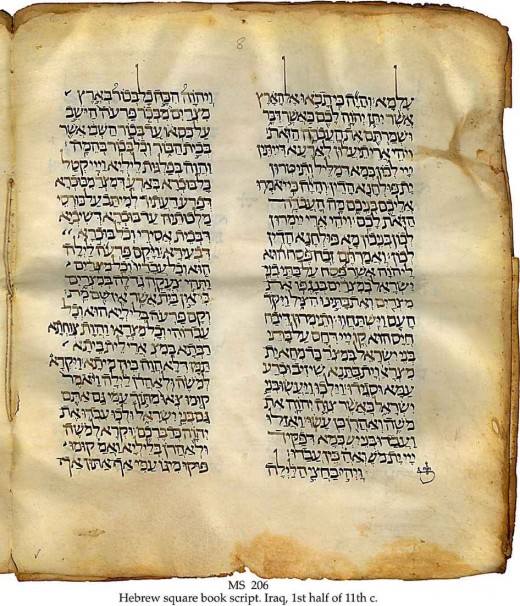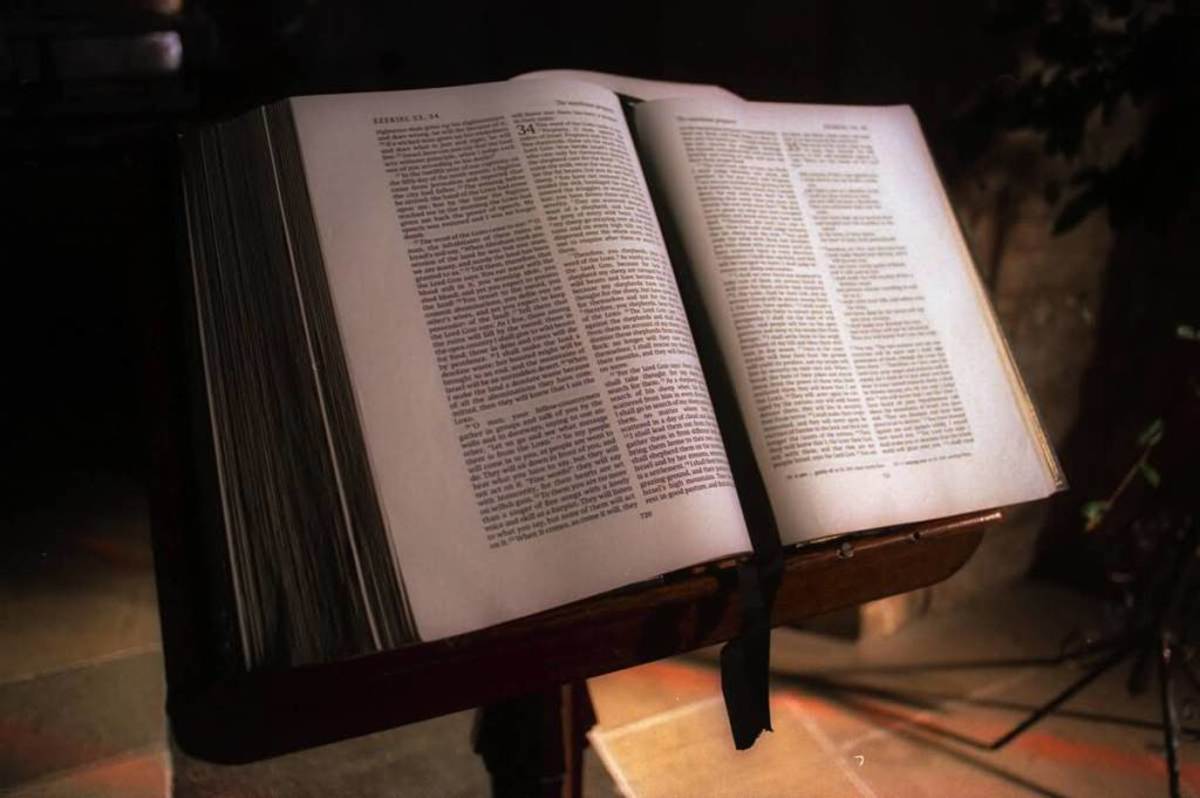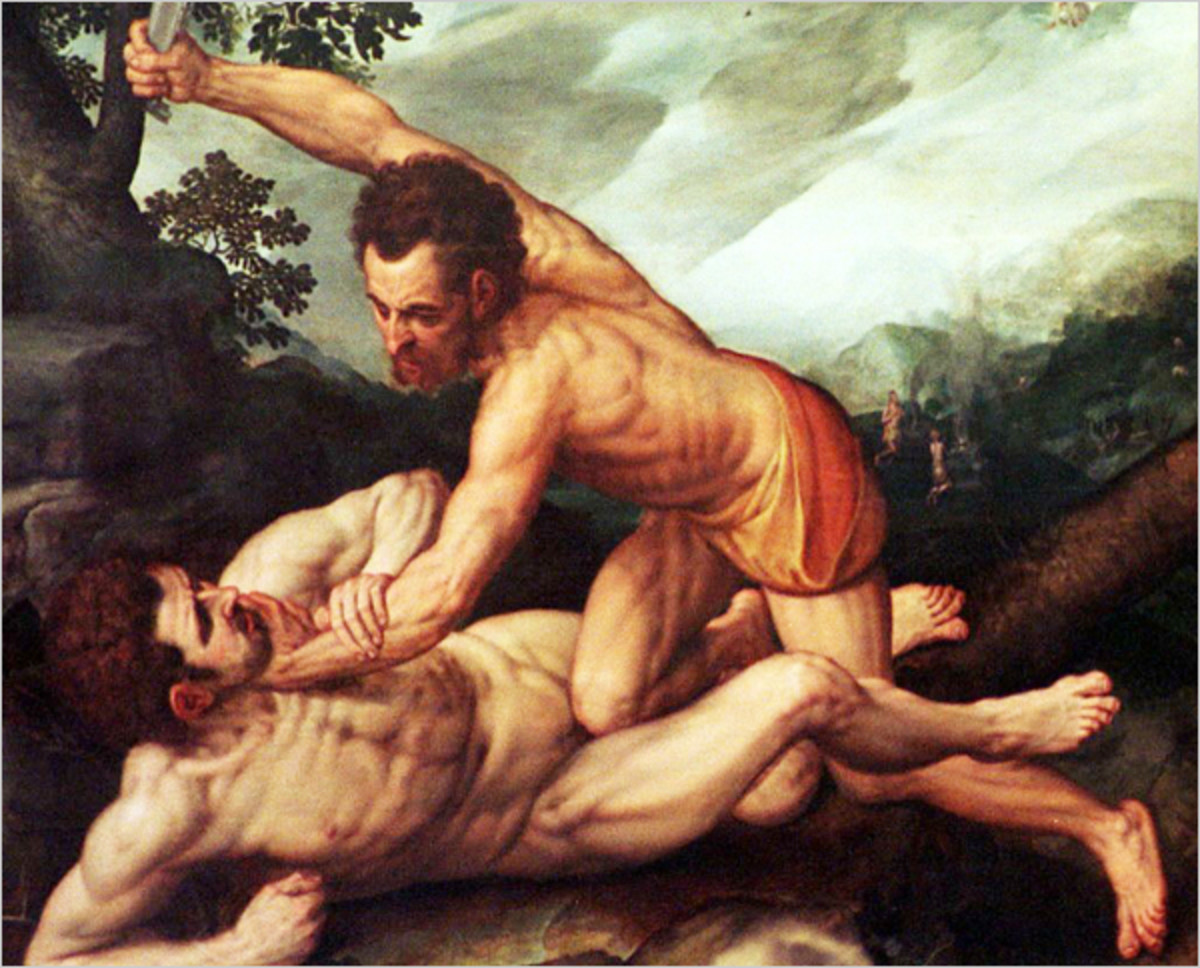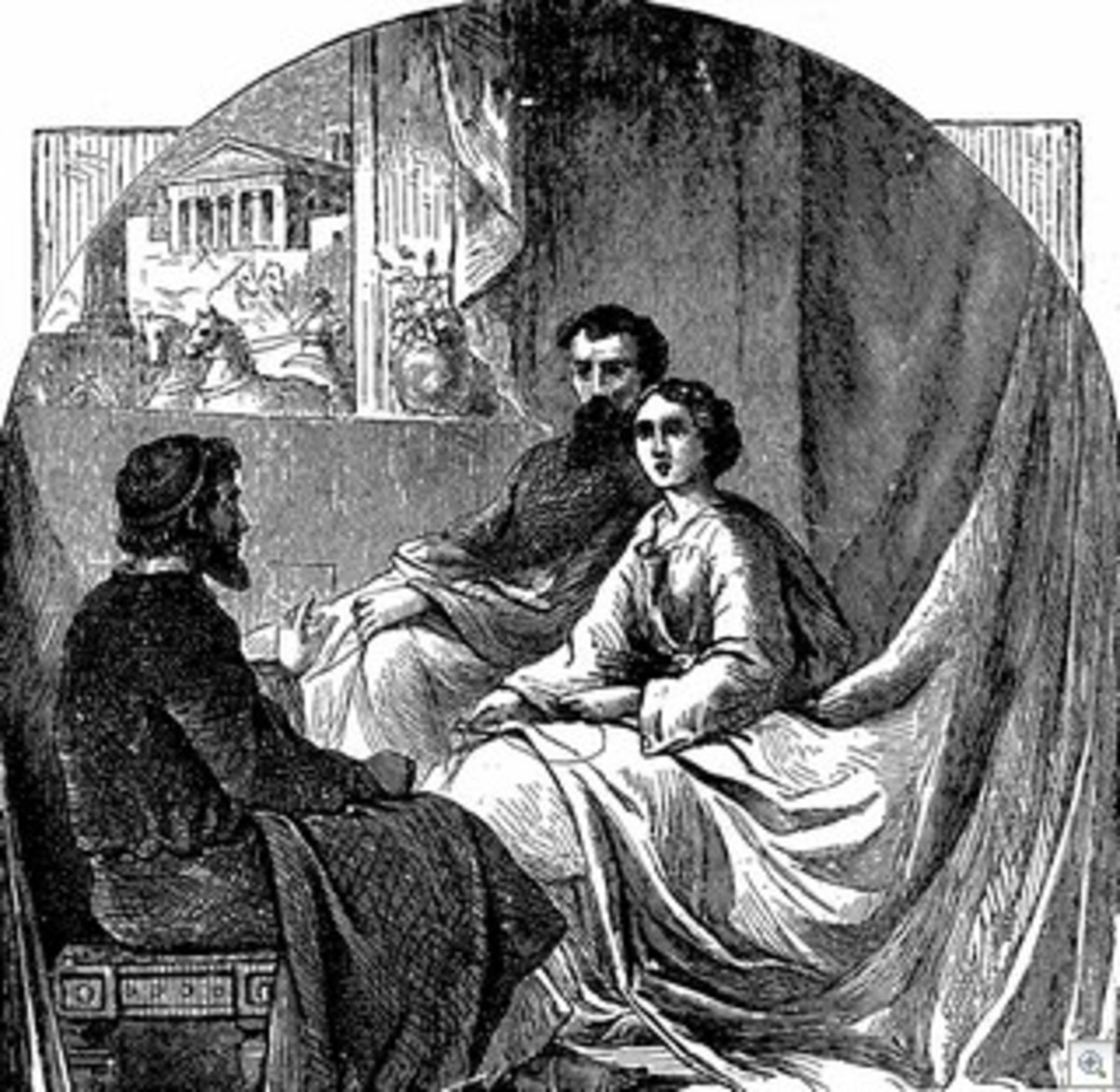How to Study the Bible for Beginners
The Need for a Simple Guide
One might ask why this article should be necessary. There are thousand of websites each offering their method to study the scripture.
Unfortunately at least two things most be stated:1) Many of them are not intended to help the absolute beginner, and 2) most of them require a discipline which many of us are not in possession of.
Now, this article will provide the beginner with a very simple approach. You can do it in your own tempo. The only thing required is that you follow the process of the method. I call it The Gospel Method because the essense of this method is the four gospels and - first of all - their different approches to their account of Jesus' life, dead and ressurection.

The Gospel Method Explained
It has been said that the relationship between the four authors ( Mark, Luke, Mathhew and John ) and the gospel itself is like that of four persons looking at an accident in a crossroads, each person standing at one of the four roads ending at the crossroads. If you ask the four persons what happened they'll all be able to give you an account of the accident, but the four accounts will never be totally identical, for the simple reason that the four persons watched the accident from different angles.
This is true also when it comes to the gospels. They are all telling about the life, dead and resurrection of Jesus of Nazareth, but they do it from different perspectives, each supplementing each other in an almost perfect way:
Mark is the storyteller. From a linguistic perspective Mark is a beautiful gospel. The language is simple and fluent. Mark is a pleasure to read.
Luke is telling his gospel from an historian's perspective. This is how his gospel starts:
1 Many have undertaken to draw up an account of the things that have been fulfilled among us, 2 just as they were handed down to us by those who from the first were eyewitnesses and servants of the word. 3 With this in mind, since I myself have carefully investigated everything from the beginning, I too decided to write an orderly account for you, most excellent Theophilus, 4 so that you may know the certainty of the things you have been taught.
Luke "carefully investigated everything from the beginning" and "decided to write an orderly account" to a man called Theophilus, so that he "may know the certainty of the things" he has been taught.
Now, this is surely gospel writing from the perspective of a historian! Luke ( Though in fact a doctor ) is careful to make a precise account of what really happened.
Matthew is writing from a prophetic perspective. Several times he - as a comment to a certain event - states that: "All this took place to fulfill ..." etc.
Matthew is primarily writing to jewish readers who know the Old Testament, the prophecies and the Salvation History, that is, God's actions with Israel. He is trying to show his readers the connection between this salvation history and the gospel.
John is writing from a missional perspective, His readers are primarily heathens from the common hellenistic culture surrounding the Mediterranian Sea, and this is why he needs to accommodate his writing to this cultural context, not by changing the essense ot the gospel, but rather by writing in a subtile dialectical manner, which on the one hand accept the way of thinking characterstic of the sorrounding cultures, on the other hand at the same time in a confronting dialogue with these cultures. This dialogues explains his use of contraditcory terms, such as light and darkness, flesh and spirit.
Now, these four different angles are the keystones in The Gospel Method. When you begin studying The Bible, don't think that it is possible to understand all the aspects right from the start. It isn't. You have to approach the content bit by bit, from different angles, but at the same time during your learning proces keep in mind the core of it all: The Christ Event.
In The Gospel Method we'll return to this core several times, that is, at the end of each level, where one of the four versions of the gospel is to be studied.
The Gospel Method Study Plan
The Gospel Method Study Plan for beginners consists of 4 levels, each focusing on the one of the aspects of the 4 gospel books. Now, here is your study plan:

Level 1: The Christ Event ( The Mark Level )
Level 1 is not only the easiest but also the shortest level. It consists of only one exercise:
Read The Gospel according to Mark
That's really it. Nothing else. But don't underestimate this level! At least, now you know the account of Jesus' life, death and resurrection. Not bad, right?

Level 2: The Historical Frame ( The Luke Level )
To properly understand what is at stake when reading an account of a person's life you often have to know the historical context. For example, you don't understand the special character of The United States of America if you know nothing about the great european migration movements in the 18th and 19th century.
Even more so, when it comes to an account which is almost 2,000 years old! If you are to really understand what the core of the Bible is, one of your building blocks is surely the historical context. Jesus lived in the Roman province Judaea. But for centuries this had been inhabited by the twelve tribes of Israel. Jesus' family was descendants of one of these tribes.
Furthermore, since the acts of God the Father is intimately intertwined with the history of Israel this history is necessary to know, if you are to grasp the full meaning, when Jesus proclaimed he was The Son of God.
To study the historical context, at this level you must read the following books from the Old Testament:
Joshua ch. 1-11; 22-24
Judges
1 Samuel
2 Samuel
1 Kings ch 1-3; 8-22
2 Kings
Ezra
Nehemiah
As you have probably realized this level 2 takes time to get through. But don't be to rigid. If there are passages which you find boring or hard to understand just skim the text, or simply hurry on to the next chapter. This isn't of course the optimal way of doing things, but on the other hand: Bible reading should be a pleasure.
Besides, don't be too ambitious when it comes to understanding. Remember, you are still a beginner, and you'll for sure return to these texts when you have become more experienced.
After having read the books of this list, you'll move on to The New Testament. And now the time has come for you to start reading The Gospel according to St. Luke. When you read Mark on level 1, you probably knew only little about the historical context. Now you do! And that is why your reading of Luke will be quite a different experience, since you can now place the gospel in a historical frame.
But the end of level 2 isn't reached yet: After having read Luke, you now read Acts which was also written by Luke. This is history as well, that is, the first church history in the world, covering the history of the church until the early sixities of the first century. The content of Acts can be said to be the consequenses of the Christ Event depicted in the Gospels.

Level 3: The Prophetic Frame ( The Matthew Level )
When reading the historical books ( as you did at level 2 ) one can hardly overlook the fact that this historical frame is in itself within an even bigger frame. This is what I call the prophetic frame. In the history of Israel, God is acting with his people and the historical events serve his purpose. Even the Christ event is situated within this frame.
At level 3 you are to study this even bigger prophetic frame. But to do this, you must now read the following writings from The Old Testament:
Genesis
Exodus ch. 1-20
Numbers ch. 11-17; 20-25; 31-33
Deuteronomy ch. 1-3; 31-34
Psalms 8; 22; 78; 91; 110; 118; 148
Isaiah ch.6-11; 40-43; 49-66
Jeremiah ch. 30-33
Zechariah ch. 8-14
After this Old Testament reading you are really well equipped to start reading The Gospel according to Matthew in a prophetic perspective. You'll now be able to understand not only the historical but also the essential continuity between The Old Testament and The Christ Event. The latter is prepared and predicted by the former.
Having finished Matthew you have to read two New Testament books before moving on to level 4, namely:
Hebrews
Revelation
In these two books the Jewish-prophetic perspective is widened. In Hebrews Jesus is depicted as the original High Priest. Revelation is the prophetic book of the New Testament, containing apocalyptic prophecies yet to be fulfilled.

Level 4: The Missional Frame ( The John Level )
Now you have got a fine basic knowlegde of the historical as well as the prophetic background of The Christ Event. At this last level we'll try to understand the purpose of the gosple writings, namely the spreading of the good message of Jesus Christ.
The Gosple according to John differs a good deal from Mark, Luke and Matthew. Where the three so-called synoptic gospels have a lot of stuff in common, John writes from quite a different perspective, trying to get into dialogue with the surrounding hellenistic culture and philosophy. This is why his gospel might be called a missional gospel.
Like John differs from the others, so does Level 4 differ from the other levels, as the readings here are from The New Testament only, concentrating on the missional purpose of the early church.
Likewise, this time you got to start with the gospel reading. The gospel according to John contains a deliberate interpretation of The Christ Event in a reflecting theological level. Whereas the synoptic gospels have a lot of accounts of what happened, to John it is more important what Jesus was saying.
With this interpreting theological approach John is a fine bridge to the New Testament letters which to a high degree are also trying to interpret how The Christ Event is to be understood by the early church. So, after having read John, you move on to
Romans
1 John
Pauls letter to the Romans is the most important and systematic interpretation of The Christ Event. I warn you: This is a difficult letter, especially for a beginner, but don't despair if you don't understand all of it. Again, you are a beginner! And as you get more experienced with The Bible more and more jigsaw pieces are placed.
The primary reason for adding John's First Letter to the reading list of this level is that there is a close connection between this letter and The Gospel according to John when it comes to style and theology.
Conclusion
Having completed these 4 levels in succession you should be really on your way of being an experienced Bible Reader.
But you haven't been through the whole Bible! one might complain. There are still many books and letters to be read. True! But this method is not intended to be something like a read-the-whole-Bible-in-a-year-course. It is intended to be a help for the beginner to become comfortable with the Bible and the Biblical universe.
Many, many beginners who started with Genesis and just moved forwards to read the whole thing have broken their necks during the reading of Leviticus, if not even before. So that is not the proper approach for the beginner. As I said: Bible reading should be a pleasure. And you can always return to Leviticus later if you one day need to know something about the Old Testament ceremonial laws.
Until then: Good Luck! May the Lord bless you with his wisdom during your study!
Thank you for reading this. If you feel encouraged to start, I'd appreciate your feedback when you are done! Or you may, of course, just leave your comment to this article below
Appendix
Reading list
If you have time and energy it is always a good idea to supply one's Bible Reading with books on the subjet. Here's a brief list. You may consult your local library or eventually an online bookstore to find more.
Knowing the Bible 101: A Guide to God's Word in Plain Language (Christianity 101®) by Bruce Bickel and Stan Jantz
Introducing the Old Testament: A Short Guide to Its History and Message
by Raymond B. Dillard
Biblical Prophecy by John H. Sailhamer
Mission in the New Testament: An Evangelical Approach (American Society of Missiology Series) by William J., Jr. Larkin and Joel F. Williams
Biblical Prophecy by John H. Sailhamer
Related articles
- Prayers in The Bible
One of the main genres of the Bible is that of prayers. This article will dive into this rich Biblical treasure!








